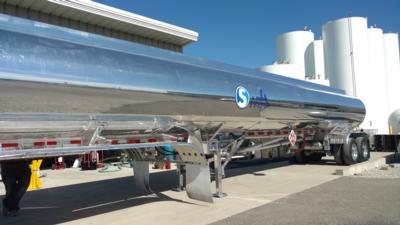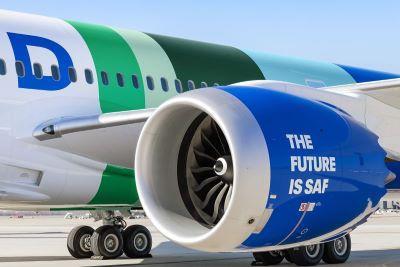Thu, Jun 05, 2025
Sustainability Push is Still Ongoing, But There’s a Long Way to Go
The International Air Transport Association updated their fact sheet on Sustainable Aviation Fuel, providing a hint at what the rest of 2025 should look like for the eco-friendly Jet-A replacement.

Everything appears to be on track for a Net Zero Carbon goal in 2050, even if the hard numbers today don’t quite seem high enough. We've still got 25 years to go, after all. The biggest impediments remain the same, high costs and limited distribution keep SAF use low for the time being. But that's how any new technology goes, and sustainable fuels are getting more support from manufacturers, operators, and regulators than most other newfangled tech. Overall, the IATA expects SAF production to reach only 2Mt this year, working out to about 0.7% of jet fuel use worldwide. On the bright side, they say, SAF mandates in the United Kingdom and European Union kicked in to help provide the kind of scaffolding the industry needs to succeed.
In addition, the IATA launched the SAF Registry, a system to record transactions in a “standardized and transparent way.” The Registry ensures that the environmental benefits of SAF are tracked throughout the value chain, allowing users some peace of mind that their purchases really do provide the ecological benefits promised on the box. As the push for SAF is increasingly felt at the ground level, the Registry will become invaluable, if only to prevent the spread of grifts and schemes. How could a buyer truly know they just filled up with Sustainable Fuel? How could they know it's compliant? How could they know its sources further upstream in the supply chain? IATA's registry helps to answer those questions with a framework that works with everyone, particularly across international bodies in similar work.

The Registry ensures carriers have access to SAF with clear, codified origins and genuinely 'sustainable' sources, while helping them tackle their eco-accounting without double counting projects or tossing money into the black hole of graft. (And when SAF is running about 150% of Jet-A costs, it's not impossible someone would try some creative re-labeling.)
IATA followed up with a quick roundup of 4 key conclusions regarding the industry at large: “The air transport industry’s energy transition is feasible on the 2050 horizon”, “The amounts of investments needed to make that possible are comparable to those engaged in previous creations of new renewable energy markets,” “Success in the transition depends critically upon policymakers’ unity of purpose,” and “The time left for joining forces in air transportation’s energy transition is shrinking by the minute. Every action delayed is an opportunity missed.”
More News
No Gyro Approach A radar approach/vector provided in case of a malfunctioning gyro-compass or directional gyro. Instead of providing the pilot with headings to be flown, the contro>[...]
Aero Linx: European Hang Gliding and Paragliding Union (EHPU) The general aim of the EHPU is to promote and protect hang gliding and paragliding in Europe. In order to achieve this>[...]
Make Sure You NEVER Miss A New Story From Aero-News Network Do you ever feel like you never see posts from a certain person or page on Facebook or Instagram? Here’s how you c>[...]
Also: Duffy Wants $$$, KS Airports, Morningside U’s Aviation School, New Airstrip In ID After 6 were killed in a helicopter crash over the Hudson River, several US Representa>[...]
Also: Hermeus Quarterhorse MK1, Seaplane Rating Guide, Vietjet A330neos, SFO Wacky Weed Bust As the air traffic controller shortage trudges on, the US Department of Transportation >[...]
 ANN's Daily Aero-Term (06.03.25): No Gyro Approach
ANN's Daily Aero-Term (06.03.25): No Gyro Approach ANN's Daily Aero-Linx (06.03.25)
ANN's Daily Aero-Linx (06.03.25) ANN FAQ: Turn On Post Notifications
ANN FAQ: Turn On Post Notifications Airborne 05.30.25: Anti-Helicopter Bill, PW Strike Done, All-Electric Bristell
Airborne 05.30.25: Anti-Helicopter Bill, PW Strike Done, All-Electric Bristell Airborne 05.29.25: ATC Bonu$, VX4 eVTOL Flies, Starship 9 Test
Airborne 05.29.25: ATC Bonu$, VX4 eVTOL Flies, Starship 9 Test




